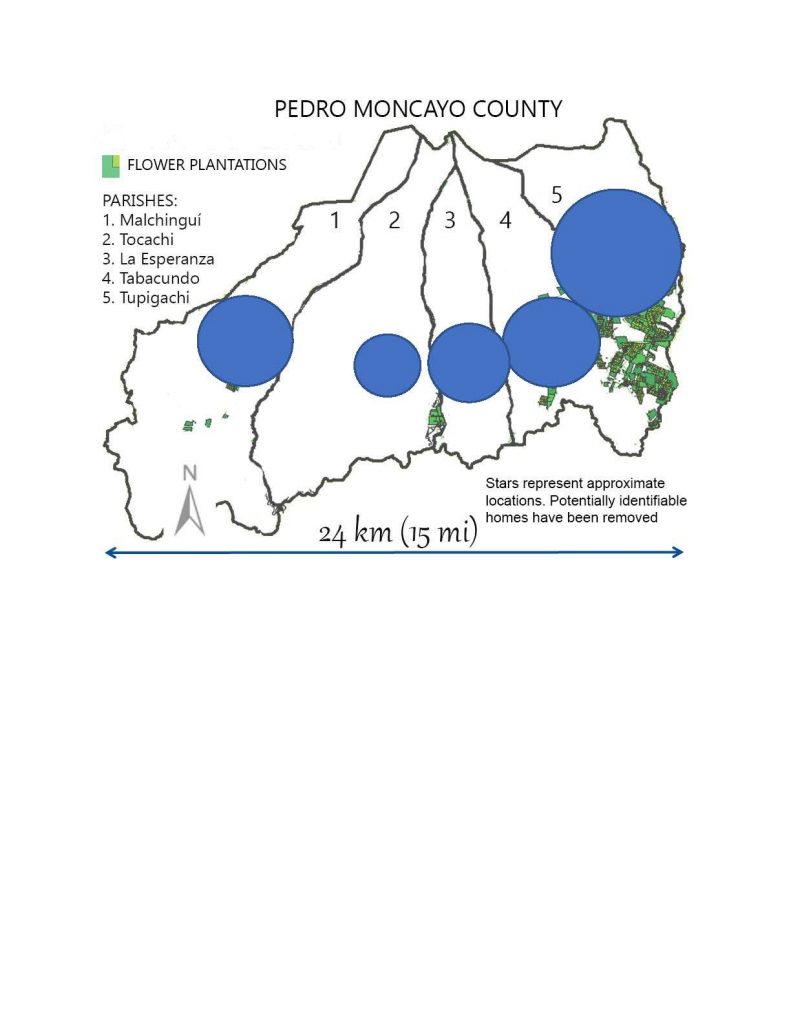Children were selected for participation in this cohort study with the objective of enrolling an approximately balanced distribution of those who lived with a flower plantation worker, and those who did not live with agricultural workers and had no known direct pesticide exposures. We examined 313 children of 4-9 years of age in 2008 who lived in Pedro Moncayo County, Ecuador.
In 2016 we conducted two more study visits: April and July-October. In April 2016, we conducted an abbreviated second examination of study participants, 145 of whom were from the original visit and an additional 185 newly recruited participants. In the third examination, July-October, 2016 we examined 535 participants of whom 404 had been seen at a previous study visit and 131 of whom were newly recruited participants.
We anticipate examining all 535 participants at our upcoming study visit in the summer of 2021.
| Participant Characteristics | |||||
| | Exam 1 | Exam 2 | Exam 3 | Exam 4 | Exam 5 |
| N | 313 | 330 | 535 | 505 | 494 |
| Age, Years | 6.6 (1.6) | 14.3 (1.9) | 14.5 (1.8) | ||
| Male | 51% | 51% | 50% | ||
| Female | 49% | 49% | 50% | ||
| Indigenous | 21% | 24% | 22% | ||
| Mixed | 77% | 76% | 78% | ||
| Other Race | 2% | 1% | 0% | ||
| BMI-for-age Z-Score, SD | 16.1 (1.4) | 20.8 (3.0) | 20.9 (3.0) | ||
| Height-for-age Z-Score, SD | 112.1 (10.3) | 148.9 (9.7) | 150.6 (9.4) | ||
| Lives with agriculture worker | 57% | 68% | 67% | ||
| Doesn’t live with agricultural worker | 43% | 32% | 33% | ||
| Distance from house to nearest flower plantation, m | 346 (178-600) | 311 (112-655) | 311 (111-659) |
Exam 1 = Summer, 2008, Exam 2 = April, 2016, Exam 3 = Summer, 2016.

